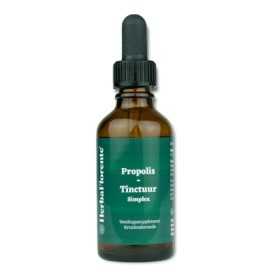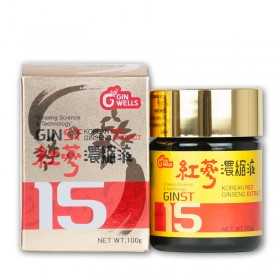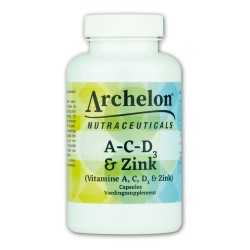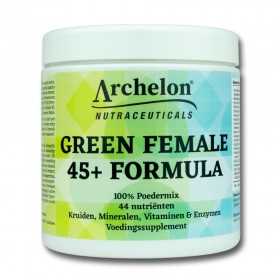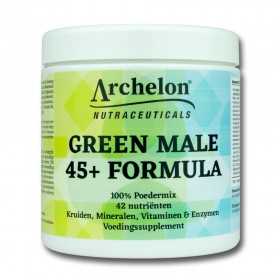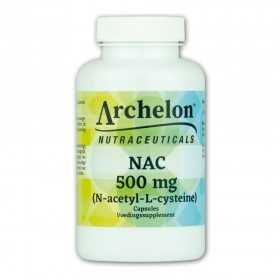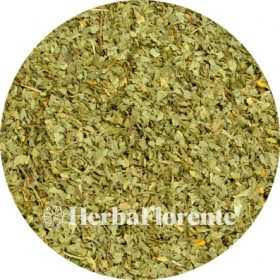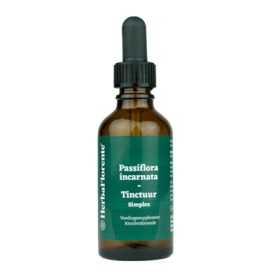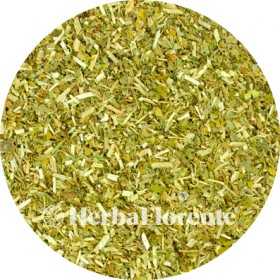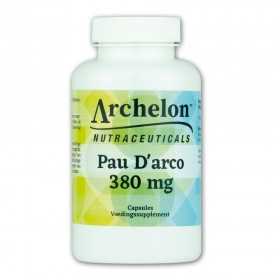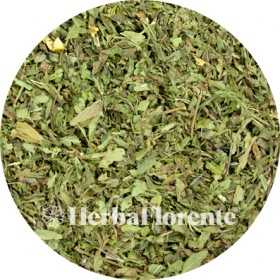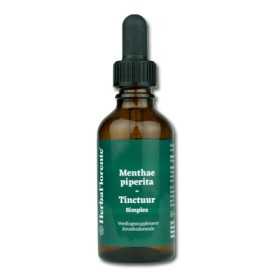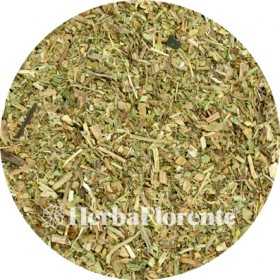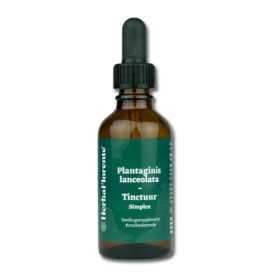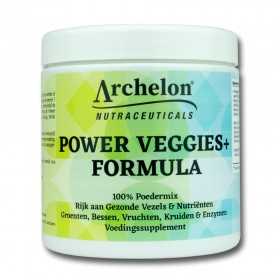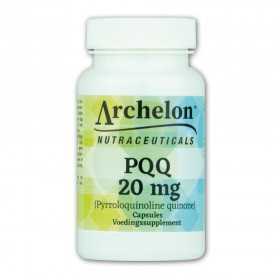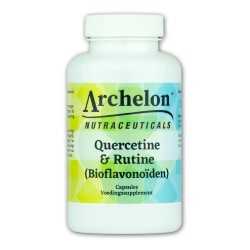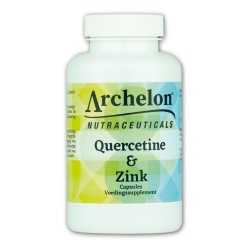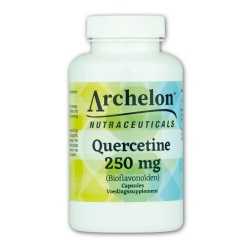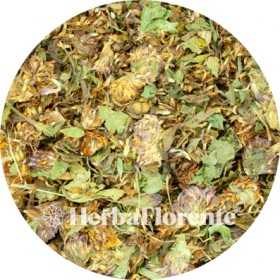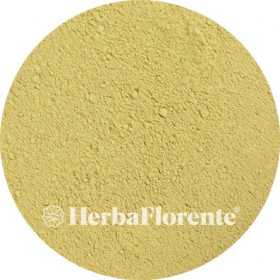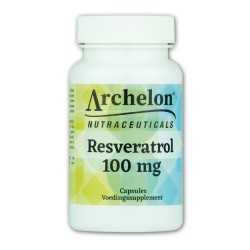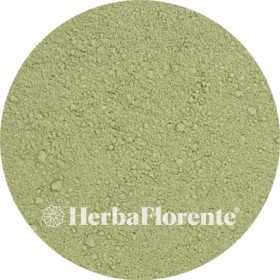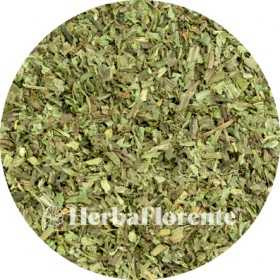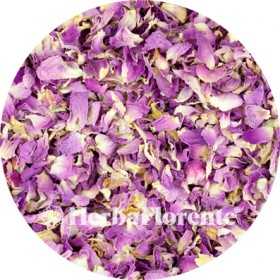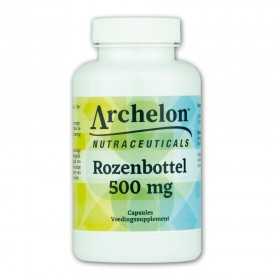Digestion
There are 270 products.
Parsley - Petroselini - Cut
Parsley (Petroselinum crispum) is a biennial, winter-hardy herbaceous plant belonging to the lacecap family (Apiaceae). It is used extensively in European, American and Middle Eastern cuisine for its fresh taste.
To the ancient Greeks, parsley symbolized joy and was used together with marjoram as a hangover remedy. The Romans spread the use of this herb throughout Western Europe. In the Middle Ages, parsley served as a vegetable and was grown, among other things, in the imperial gardens of Charlemagne.
Adding parsley (usually the leaves) to dishes is best done just before serving. It is often combined with garlic in butter to make herb butter and can also be used in salads. Ground parsley seeds serve as a spice.
To the ancient Greeks, parsley symbolized joy and was used together with marjoram as a hangover remedy. The Romans spread the use of this herb throughout Western Europe. In the Middle Ages, parsley served as a vegetable and was grown, among other things, in the imperial gardens of Charlemagne.
Adding parsley (usually the leaves) to dishes is best done just before serving. It is often combined with garlic in butter to make herb butter and can also be used in salads. Ground parsley seeds serve as a spice.
€2.20
From: €2.20
Passion Flower Tincture - Passiflora incarnata Tincture
Single herbal tincture made with dried herb of Passiflora incarnata (Passion Flower).
Passionflower (Passiflora incarnata) is known as a traditional herb that has long been used to reduce stress and inner turmoil. Native people of Central and North America used various parts of the plant to relax and sleep better. It is a natural sedative.
Although the blue passion flower originally only grew in America, it can now be found almost everywhere. The flowers of the Passiflora incarnata are not only beautiful to look at, but also edible. In the fall, passion fruits grow and the leaves are also edible. These leaves are rich in tannins, flavanols, saponins, choline and magnesium.
Passionflower (Passiflora incarnata) is known as a traditional herb that has long been used to reduce stress and inner turmoil. Native people of Central and North America used various parts of the plant to relax and sleep better. It is a natural sedative.
Although the blue passion flower originally only grew in America, it can now be found almost everywhere. The flowers of the Passiflora incarnata are not only beautiful to look at, but also edible. In the fall, passion fruits grow and the leaves are also edible. These leaves are rich in tannins, flavanols, saponins, choline and magnesium.
€11.95
Passionflower - Passiflora incarnata
Passionflower (Passiflora incarnata) is known as a traditional herb that has long been used to reduce stress and inner turmoil. Native people of Central and North America used various parts of the plant to relax and sleep better. It is a natural sedative.
Although the blue passion flower originally only grew in America, it can now be found almost everywhere. The flowers of the Passiflora incarnata are not only beautiful to look at, but also edible. In the fall, passion fruits grow and the leaves are also edible. These leaves are rich in tannins, flavanols, saponins, choline and magnesium.
Although the blue passion flower originally only grew in America, it can now be found almost everywhere. The flowers of the Passiflora incarnata are not only beautiful to look at, but also edible. In the fall, passion fruits grow and the leaves are also edible. These leaves are rich in tannins, flavanols, saponins, choline and magnesium.
€2.40
From: €2.40
Pau D'arco - 380 mg
Pau d'arco (Tabebuia avellanedae) is an imposing tree that thrives in the Amazon rainforest. The bark of the pau d'arco has been used for centuries in traditional herbal medicine for its diverse uses, including its supportive effects on the immune system.
The inner layer of the bark of Tabebuia avellanedae is packed with flavonoids, powerful antioxidants that protect our bodies against oxidative damage caused by free radicals. In addition, it contains a significant amount of quinones. More than 20 quinone compounds have already been discovered in the bark of the pau d'arco, such as lapachol and beta-lapachone. In addition, the bark contains substances that help defend against unfavorable bacteria and fungi.
The inner layer of the bark of Tabebuia avellanedae is packed with flavonoids, powerful antioxidants that protect our bodies against oxidative damage caused by free radicals. In addition, it contains a significant amount of quinones. More than 20 quinone compounds have already been discovered in the bark of the pau d'arco, such as lapachol and beta-lapachone. In addition, the bark contains substances that help defend against unfavorable bacteria and fungi.
€19.95
Peppermint - Menthae piperita
Peppermint oil (Mentha piperita) is often taken to support digestion. Peppermint is a member of the Lamiaceae family and is used for making peppermint candy.
In herbal medicine, peppermint has a long history dating back to ancient Greece. There, the fragrant peppermint leaf was traditionally used to aid digestion. Peppermint contains several essential oils, including menthol, menthone and cineole.
Peppermint originated from a cross between water mint (Mentha aquatica) and spike mint (Mentha spicata). In the seventeenth century, this plant was discovered in England in a field with mint plants.
In herbal medicine, peppermint has a long history dating back to ancient Greece. There, the fragrant peppermint leaf was traditionally used to aid digestion. Peppermint contains several essential oils, including menthol, menthone and cineole.
Peppermint originated from a cross between water mint (Mentha aquatica) and spike mint (Mentha spicata). In the seventeenth century, this plant was discovered in England in a field with mint plants.
€2.00
From: €2.00
Peppermint Tincture - Menthae piperita Tincture
Single herbal tincture made with dried herb of Menthae piperita (Peppermint).
Peppermint oil (Mentha piperita) is often taken to support digestion. Peppermint is a member of the Lamiaceae family and is used for making peppermint candy.
In herbal medicine, peppermint has a long history dating back to ancient Greece. There, the fragrant peppermint leaf was traditionally used to aid digestion. Peppermint contains several essential oils, including menthol, menthone and cineole.
Peppermint oil (Mentha piperita) is often taken to support digestion. Peppermint is a member of the Lamiaceae family and is used for making peppermint candy.
In herbal medicine, peppermint has a long history dating back to ancient Greece. There, the fragrant peppermint leaf was traditionally used to aid digestion. Peppermint contains several essential oils, including menthol, menthone and cineole.
€11.95
Plantain Broadleaf - Plantaginis major
The Plantain Broadleaf (Plantago major) is a plant belonging to the plantain family (Plantaginaceae) and varies in size from 10 to 50 cm. It forms a dense leaf rosette that is resistant to foot traffic, which is why it is often considered a weed. This plant species is common in gardens, along roads and paths, and is sometimes derisively called the "white man's footprint". Nevertheless, there is a cultivated variety known as Plantago major 'Rosularis'.
€2.00
From: €2.00
Plantain Narrow Tincture - Plantago lanceolata Tincture
Single herbal tincture made with dried herb of Plantaginis (Plantago) lanceolata (Plantain Narrow).
Narrow plantain (Plantago lanceolata) is a native plant that thrives in Europe, parts of Asia, North Africa and North America. The young leaves of this plant contain a rich mix of beneficial substances, including mucilages, tannins, bitter substances, flavonoids and minerals such as potassium and zinc. Best known for its soothing effect on the throat thanks to its mucilages, plantain also provides support for the immune system and promotes normal intestinal function. In addition, it can help maintain flexible joints and is beneficial for the liver.
Narrow plantain (Plantago lanceolata) is a native plant that thrives in Europe, parts of Asia, North Africa and North America. The young leaves of this plant contain a rich mix of beneficial substances, including mucilages, tannins, bitter substances, flavonoids and minerals such as potassium and zinc. Best known for its soothing effect on the throat thanks to its mucilages, plantain also provides support for the immune system and promotes normal intestinal function. In addition, it can help maintain flexible joints and is beneficial for the liver.
€9.95
Power Berries+ Formula
Our Power Berries+ Formula provides a balanced blend of nutrients specially formulated to support your overall health. This unique formula is packed with healthy fiber and essential nutrients, including polyphenols, phytonutrients, antioxidants and natural vitamins.
€57.50
Power Veggies+ Formula
Our Power Veggies+ Formula provides a balanced blend of essential nutrients to support your overall health. With an abundance of healthy fibers and nutrients, is Power Veggies+ Formula specially formulated to nourish and glow your body.
€59.50
PQQ (Pyrroloquinoline quinone) - 20 mg
PQQ, abbreviated for Pyrroloquinoline quinone, is a substance similar to a B vitamin and mainly found in plants. It is also sometimes called 'super Q10' because of its similar properties. Although PQQ has been around for a long time, it was only recently discovered. This water-soluble substance plays a role in enzymatic reactions and supports enzymes in their function. In addition, PQQ has various other properties.
A lot of research is currently being done into the exact composition and function of PQQ. This substance occurs naturally in various foods, such as spinach, kiwi, soy beans (especially green and fermented soy beans such as nattō), mustard and tofu. Green tea is also a rich source of PQQ.
A lot of research is currently being done into the exact composition and function of PQQ. This substance occurs naturally in various foods, such as spinach, kiwi, soy beans (especially green and fermented soy beans such as nattō), mustard and tofu. Green tea is also a rich source of PQQ.
€42.95
Propolis Tincture - Propolis Tincture
Single tincture made with Propolis.
Propolis, the secret weapon of the bee colony, is used to protect the hive or hive against bacteria and fungi and as 'cement' to close the openings. It is a natural brown-red substance consisting of vegetable resins, beeswax, essential oils and pollen, with traces of vitamins and minerals.
From June onwards, honey bees collect resin from the buds and leaves of trees and herbaceous plants on warm days. They mix this with their saliva and process it with their paws, ultimately creating propolis.
Propolis, the secret weapon of the bee colony, is used to protect the hive or hive against bacteria and fungi and as 'cement' to close the openings. It is a natural brown-red substance consisting of vegetable resins, beeswax, essential oils and pollen, with traces of vitamins and minerals.
From June onwards, honey bees collect resin from the buds and leaves of trees and herbaceous plants on warm days. They mix this with their saliva and process it with their paws, ultimately creating propolis.
€20.95
Psyllium husks (Premium Psyllium Fiber) - Psylli flavum Testa
Psyllium husks, derived from Plantago psyllium, are a blend of partially soluble and fermentable fibers that are much appreciated by people looking to promote their gut health. They are a valuable addition to your daily fiber intake, but it is crucial to drink enough water throughout the day for optimal results.
With more than 80% fiber, psyllium seed consists mainly of 70% soluble and 30% insoluble fiber. Once psyllium comes into contact with water, it forms a gel that can absorb up to ten times its own weight in water. This increases the amount of fluid in the intestines, making stools softer, but don't forget to drink enough water!
With more than 80% fiber, psyllium seed consists mainly of 70% soluble and 30% insoluble fiber. Once psyllium comes into contact with water, it forms a gel that can absorb up to ten times its own weight in water. This increases the amount of fluid in the intestines, making stools softer, but don't forget to drink enough water!
€2.80
From: €2.80
Quassia - Quassiae - Cut
Quassia, known in Surinamese as kwasibita, is the heartwood of the Quassia amara, a plant species from the Quassia genus within the Tree of Heaven family. This South American plant is often planted in the tropics for its use as a remedy for malaria.
Quassia amara is a small, evergreen shrub found in tropical South America, particularly the Guianas, northern Brazil and Venezuela. The plant grows in the understory of the rainforest and its striking red flowers are pollinated by hummingbirds. Because of these beautiful flowers, the plant is also often planted for decorative purposes.
Quassia amara is a small, evergreen shrub found in tropical South America, particularly the Guianas, northern Brazil and Venezuela. The plant grows in the understory of the rainforest and its striking red flowers are pollinated by hummingbirds. Because of these beautiful flowers, the plant is also often planted for decorative purposes.
€2.40
From: €2.40
Quercetin & Rutin (Bioflavonoids)
Quercetin is a flavonoid, also called bioflavonoid. This natural plant compound is found in various plants, fruits and vegetables. Flavonoids are responsible for the vibrant colors (pigments) in these plants and come in various shades. They play a crucial role in plant metabolism, regulate growth, and provide protection against UV light, oxidation and heat.
Rutin, also known as a flavonoid or bioflavonoid, is a naturally occurring substance in vegetables, fruits, herbs and plants. It is known for its vibrant pigmentation and can have different colors. Rutin plays several important roles in plants, such as regulating growth, protecting against UV radiation, oxidation and heat, and maintaining plant metabolism.
Rutin, also known as a flavonoid or bioflavonoid, is a naturally occurring substance in vegetables, fruits, herbs and plants. It is known for its vibrant pigmentation and can have different colors. Rutin plays several important roles in plants, such as regulating growth, protecting against UV radiation, oxidation and heat, and maintaining plant metabolism.
€32.95
Quercetin & Zinc
Quercetin is a flavonoid, also called bioflavonoid. This natural plant compound is found in various plants, fruits and vegetables. Flavonoids are responsible for the vibrant colors (pigments) in these plants and come in various shades. They play a crucial role in plant metabolism, regulate growth, and provide protection against UV light, oxidation and heat.
Zinc is available in different forms. Zinc bisglycinate has a very good bioavailability. It is a chelated form of zinc bound to two (bis) molecules of the amino acid glycine which has more benefits for the body. Zinc has a very wide range of action and is involved in many body processes. Zinc is essential for the activity of more than 300 enzymes that have the zinc ion as a cofactor.
Zinc is available in different forms. Zinc bisglycinate has a very good bioavailability. It is a chelated form of zinc bound to two (bis) molecules of the amino acid glycine which has more benefits for the body. Zinc has a very wide range of action and is involved in many body processes. Zinc is essential for the activity of more than 300 enzymes that have the zinc ion as a cofactor.
€34.95
Quercetin - 250 mg
Quercetin is a flavonoid, also called bioflavonoid. This natural plant compound is found in various plants, fruits and vegetables. Flavonoids are responsible for the vibrant colors (pigments) in these plants and come in various shades. They play a crucial role in plant metabolism, regulate growth, and provide protection against UV light, oxidation and heat.
Quercetin belongs to a group of plant compounds known as flavonoids. Many flavonoids contribute to the coloring of plants to some extent. In addition, quercetin is a powerful antioxidant. It can be well combined with other antioxidant flavonoids, such as rutin and vitamin C, for an enhanced effect.
Quercetin belongs to a group of plant compounds known as flavonoids. Many flavonoids contribute to the coloring of plants to some extent. In addition, quercetin is a powerful antioxidant. It can be well combined with other antioxidant flavonoids, such as rutin and vitamin C, for an enhanced effect.
€27.95
Red Clover (Flower) - Trifolii Rubr. pratense - Whole
Red clover (Trifolium pratense) grows naturally in Europe and Central Asia. Usually the leaves of red clover have three parts and a light purple flower blooms in the middle. In addition to the high content of isoflavones, which are bioactive substances that fall under polyphenols, the flower heads of red clover are also rich in vitamin C, B1, B2, B3, beta-carotene and choline.
Red clover can help with menopausal symptoms such as hot flashes, mood swings and irritability. In addition, it supports heart health and contributes to the condition of the blood vessels. It can also be used to maintain strong bones.
Red clover can help with menopausal symptoms such as hot flashes, mood swings and irritability. In addition, it supports heart health and contributes to the condition of the blood vessels. It can also be used to maintain strong bones.
€2.80
From: €2.80
Red Clover - Trifolii Rubr. pratense
Red clover (Trifolium pratense) grows naturally in Europe and Central Asia. Usually the leaves of red clover have three parts and a light purple flower blooms in the middle. In addition to the high content of isoflavones, which are bioactive substances that fall under polyphenols, the flower heads of red clover are also rich in vitamin C, B1, B2, B3, beta-carotene and choline.
Red clover can help with menopausal symptoms such as hot flashes, mood swings and irritability. In addition, it supports heart health and contributes to the condition of the blood vessels. It can also be used to maintain strong bones.
Red clover can help with menopausal symptoms such as hot flashes, mood swings and irritability. In addition, it supports heart health and contributes to the condition of the blood vessels. It can also be used to maintain strong bones.
€3.20
From: €3.20
Resveratrol - 100 mg
Resveratrol is a naturally occurring substance in Japanese knotweed (Polygonum cuspidatum). It belongs to polyphenols, a group of organic molecules mainly found in vegetables, fruits, herbs and other plants. Polyphenols consist of different phenolic groups and include substances such as simple phenols, coumarins, flavonoids and anthocyanins. They play a crucial role in the metabolism of plants, protect the plant, regulate growth and provide protection against UV light, oxidation and heat.
Resveratrol has beneficial properties for protecting healthy cells and tissues in the body and is also good for the heart and blood vessels.
Resveratrol has beneficial properties for protecting healthy cells and tissues in the body and is also good for the heart and blood vessels.
€32.95
Ribwort Plantain - Plantaginis lanceolata
Ribwort Plantain (Plantago lanceolata) is a native plant that thrives in Europe, parts of Asia, North Africa and North America. The young leaves of this plant contain a rich mix of beneficial substances, including mucilages, tannins, bitter substances, flavonoids and minerals such as potassium and zinc. Best known for its soothing effect on the throat thanks to its mucilages, plantain also provides support for the immune system and promotes normal intestinal function. In addition, it can help maintain flexible joints and is beneficial for the liver.
€2.40
From: €2.40
Ribwort Plantain - Plantaginis lanceolata - Cut
Narrow plantain (Plantago lanceolata) is a native plant that thrives in Europe, parts of Asia, North Africa and North America. The young leaves of this plant contain a rich mix of beneficial substances, including mucilages, tannins, bitter substances, flavonoids and minerals such as potassium and zinc. Best known for its soothing effect on the throat thanks to its mucilages, plantain also provides support for the immune system and promotes normal intestinal function. In addition, it can help maintain flexible joints and is beneficial for the liver.
€2.00
From: €2.00
Rose - Rosae damascena
Rosae damascena, also known as the damask rose, is a versatile flower with many names, including the Iranian rose, Bulgarian rose, Taif rose, Ispahan rose and Castile rose.
These flowers are known for their delicate fragrance and are grown commercially for rose oil, both "rose otto" and "rose absolute", which is widely used in perfumery. They are also used to make rose water and "rose concrete". The petals are even edible and are used to flavor dishes, as a garnish, to make herbal tea and to preserve gulkand in sugar. Moreover, the damask rose is the national flower of Iran.
These flowers are known for their delicate fragrance and are grown commercially for rose oil, both "rose otto" and "rose absolute", which is widely used in perfumery. They are also used to make rose water and "rose concrete". The petals are even edible and are used to flavor dishes, as a garnish, to make herbal tea and to preserve gulkand in sugar. Moreover, the damask rose is the national flower of Iran.
€12.50
From: €12.50
Rosehip - 500 mg
The dog rose (Rosa canina) is a native rose species in the Benelux, found in Europe, Northwest Africa and West Asia. This species has been introduced into North America.
After flowering, a rose hip develops, a fleshy flower base with nutty fruits inside. The rose hip is oval or ovoid, red-orange in color, and measures 1-2.5 cm long and 1-1.8 cm wide.
Rose hips are often used for making jam because of their high vitamin C content. They also contain carotene, vitamin B1 and vitamin B2.
After flowering, a rose hip develops, a fleshy flower base with nutty fruits inside. The rose hip is oval or ovoid, red-orange in color, and measures 1-2.5 cm long and 1-1.8 cm wide.
Rose hips are often used for making jam because of their high vitamin C content. They also contain carotene, vitamin B1 and vitamin B2.
€19.95

